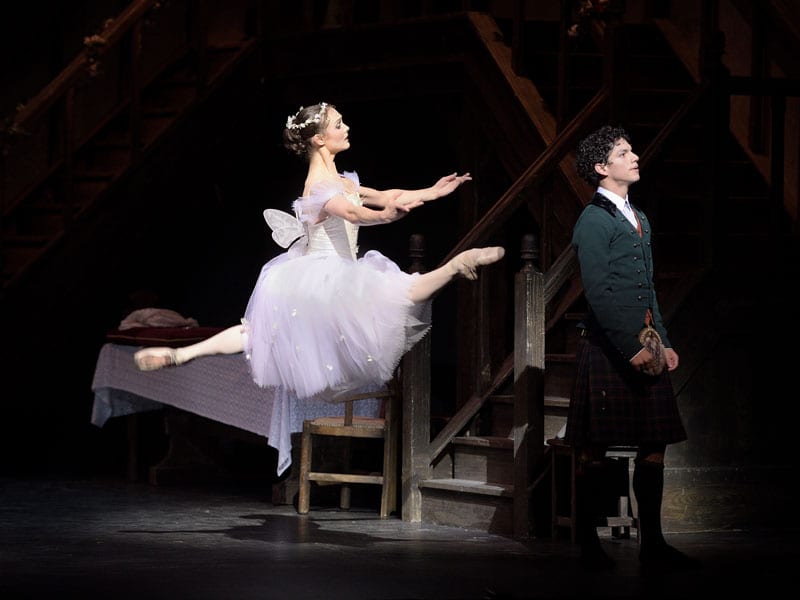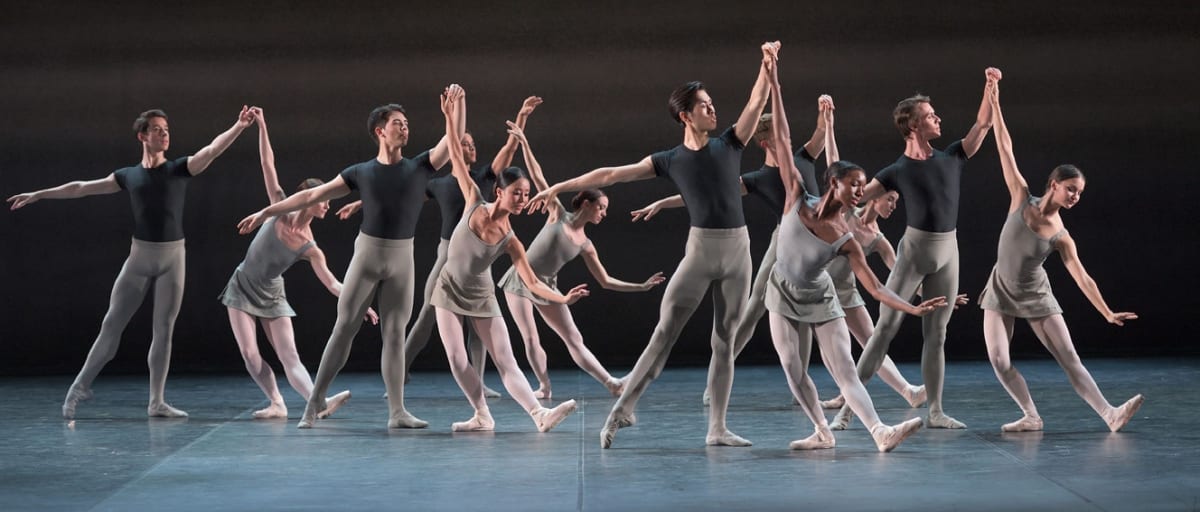This double bill which formed part of the English National Ballet’s residency at the Coliseum was an odd and ultimately unsatisfactory pairing. There was no obvious common ground in theme or handling between the two ballets and no insightful contrasts either. Macmillan’s 1965 ballet combines modern dance and classical ballet techniques while Bournonville’s slice of fairy-tale Scots baronial from 1836 is a charming, naïve and decorative work that is all fluffy surface and sentimental conceits – none the worse for that, but a world away from the delicate and essentially abstract evocation of natural beauty and the transience of life that defines the character of Mahler’s song-symphony.
Covent Garden originally rejected Macmillan’s proposal for a ballet on the Mahler, and so it was created in Stuttgart instead. One can see the point of the original management reservations: while there is nothing in the music that defies choreography, the songs are often very similar in tone and musical palette and have only fragments of organising narrative. It was these wistful and delicate moments that came off best, while the governing conceit of a Man, a Woman and the Messenger of Death, never really convinced, despite some finely achieved shapes and sequences among the principals. Macmillan usually provides dynamism through an ‘outsider’ figure, but here Death was more a gentle hospice visitor rather than a scythe-bearing figure of dread.
There is a prominent role for group dancing by the male dancers, which anticipates some of the wonderfully free joshing movement of Mercutio, Tybalt and the gangs of Montagues and Capulets in Romeo and Juliet; but here it is not really anchored in a clear sense of purpose or meaning, and it is not, in this production, very crisp or certain in delivery, either. The gloomy lighting scheme and insipid costumes, carried over from the original production, were also at odds with the music, which is anything but pallid. On the other hand, the company orchestra was well up to the challenges of Mahler’s score, and the two singers, especially Rhonda Browne, delivered their taxing roles with skill and appropriate expression. This work is above all interesting for its pre-figuring in style and choreography of Romeo & Juliet, which followed shortly thereafter, and showed what Macmillan could do with a driving narrative line and Prokofiev’s gloriously pictorial score.

Things improved markedly with La Sylphide, with plenty of fairy whimsy and high-flying tartan, virtuosic solos and rousing group sequences, and a suitably over-the-top sorceress called Madge to ruin any chance of a happy ending. All the soloists were confident and accomplished in their roles, but Rina Kanehara danced with special poise and charm in the title role, and Ciro Tamayo, as James, capered and keened very stylishly around her. The corps de ballet, male and female, seemed so much more confident with their routines, which have been carefully preserved and then updated in Denmark where this ballet is something of a national tradition thanks to the Danish composer of the music (which sounds a bit like early Gilbert and Sullivan). There was much more scope here than in the first half for romantic naturalism in both castle and forest; and with garishly bright costumes there was always some striking detail to observe alongside the pretty, perky precision of the choreography, and the affecting death scene as the fairy is wafted into the flies.
The evening was not advanced by the inclusion of two absurdly long intervals, the second of which, between the two acts of La Sylphide, had no justification other than commercial expediency. A brief break for scene changes was all that was needed, and the audience registered this by in greater part not even leaving their seats.

